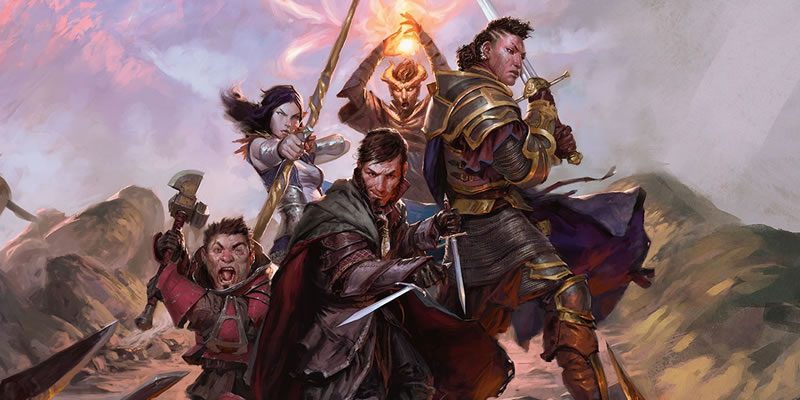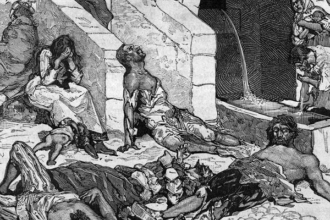6 Ways to Improve Your Combats

Running a good combat situation involves many things like finding a good match between the characters’ skill level and the foes’ abilities, keeping the action fast-paced, and trying to find that sweet spot where the characters feel challenged but not overwhelmed (unless of course, that’s what you are deliberately trying to do). However, adding a few surprises or some bells and whistles can make a good combat a great one.
What do I mean by this? Well what follows are six ways you can improve most combat situations. And while it might not be advisable to add in all of them at once, giving some thought and executing one or two at a time can definitely up your combat game.
Keep Some Enemies Hidden
Smaller foes such as Goblins and Kobolds or stealthy foes such as Halflings, Elves, Drow, and many others should be using their ability to stay hidden as often as possible. One of the first questions usually asked around the table when a combat begins is ‘How many are there?’ As a DM, I always try to qualify my answer by saying ‘you see four’ rather than saying ‘there are four’. This small distinction leaves the door open for me to have another two, three, four, or more foes well hidden nearby. The revelation that comes to the PCs after they think they have dealt with all of the foes only then to discover an arrow or a javelin sticking out of their butts is priceless and adds another dimension to your fight. It’s also a good practice to hold back one or two foes to the very end in case the PCs might want to capture/interrogate one.
Lay Down Traps
It’s a trap! Players finding traps in a cave, dungeon, or other enclosed area is quite common; but I find that many DMs don’t bother laying down traps in open areas like forests, fields, ruins, etc. This is a mistake that needs to be fixed, especially if your players are walking into an ambush. Unless you’re dealing with semi-intelligent foes such as insects, animals, and lower undead a few traps seem to me to be the first thing foes would do to prepare for your arrival. Nothing sends a clearer ‘be wary’ message to your players than walking straight into a leg trap or a flimsy cover that hides a spiked pit. Add all of that to a few foes running around and suddenly your players have lots to occupy their minds. It might also get your PCs to thinking about setting a few traps of their own in the future and that’s never a bad thing.
Let Your Enemies Come In Waves
In the event that your combat is going to involve a larger number of foes, say around 10+, I would recommend that they come in waves. This would include any type of large-scale battle, a horde of minions, or perhaps multiple fights as the PCs try to escape a location. This wave style serves two main purposes: 1) It allows the players to take a short rest between waves which extends their durability and thus allows the combat to go on for an extended period. This can give the battle an epic feeling which is quite enjoyable and memorable. 2) It also gives the DM time to set up different foes coming at the players from different angles which makes the combat more versatile. If you are going to use the wave style of combat, take full advantage of it and don’t make any two waves the same. This will keep your players on their toes and force them to use different tactics for different waves.
Protect The Enemy Spell Casters
Experienced players know to go for the spell casters first. Arcane types tend to do the most damage on the whole and divine types can extend the life and increase the difficultly of a battle significantly via healing. Neither of these things are good for the long-term goals of your PCs and many of them know it. Thus, if you know that your PCs are going to storm after your spell casters first, plan accordingly. Give them bodyguards, give them escape routes, use illusions, or give them some magical defenses to safeguard their persons. One of the most frustrating situations a DM can run into is planning a critical encounter centered around a powerful spell caster only to have that spell caster go down in three or four rounds because the PCs focused on them first (and, from the PCs’ point of view, rightly so). So, if you want that spell caster to last a half-dozen rounds or more, you need to think ahead.
Bestow The Items Unto Them
D&D players love magic. It’s a fact. They will gobble up any potions, dusts, weapons, armor, spells or items you are willing to offer. But what about their enemies? It’s a pretty safe assumption to say that Orcs, Lizardfolk, Bandits, and other foes must be just as keen on finding and using magic as well. So why not incorporate that into your combats? There is nothing wrong with having the leader of a clan of Orcs carry a +2 Battleaxe or letting a rogue Halfling employ the use of a portable hole. Letting the baddies have a few items can be fun as long as a few rules are incorporated. Firstly, it is important to note that more powerful items such as a Ring of Regeneration or +5 Chainmail can single-handedly alter the outcome of a battle. In these cases you must use them wisely and, in my opinion, sparingly. Secondly, try to keep the power of the item in step with the wielder. That is to say that a 1st level goblin wielding a Staff of the Magi is a bit strange but that same goblin using a healing potion seems fitting. Thirdly, and most importantly, never forget that the items you give your foes are more than likely going to fall into the hands of your players when the fight is over. If you don’t want your cleric to have the Rod of Resurrection or your ranger to have the Gauntlets of Ogre Power, don’t put them on the table.
Upgrade Your Terrain
Sometimes you don’t need to alter the foes at all to make a battle more interesting. Sometimes it just takes a little flourish to the players’ scenery or surroundings. When I design a combat, especially one that is important to the campaign like a boss fight, I often strive to offer something the players have never seen before. Here are some examples of what I mean:
1) Instead of a fight in a forest, offer up a fight in forest during a thunder and lightning storm.
2) Instead of a fight on a stone bridge, make it a fight on a wooden bridge which is also on fire.
3) Instead of fighting in an old cave, try fighting in a cave where any major noise might lead to a collapse.
4) Instead of fighting in a desert, set the combat in a desert during a major sandstorm.
The more layers you can incorporate into the combat terrain leads to a much more dynamic battle. This will in turn get the attention of your players and give them a lot more to think about than just “‘What am I fighting?”



